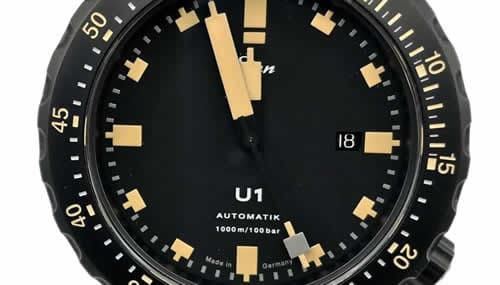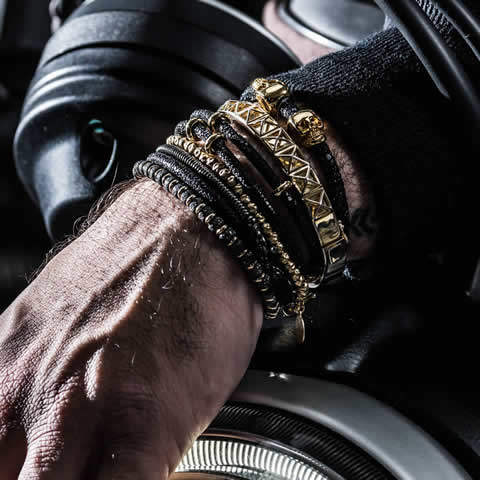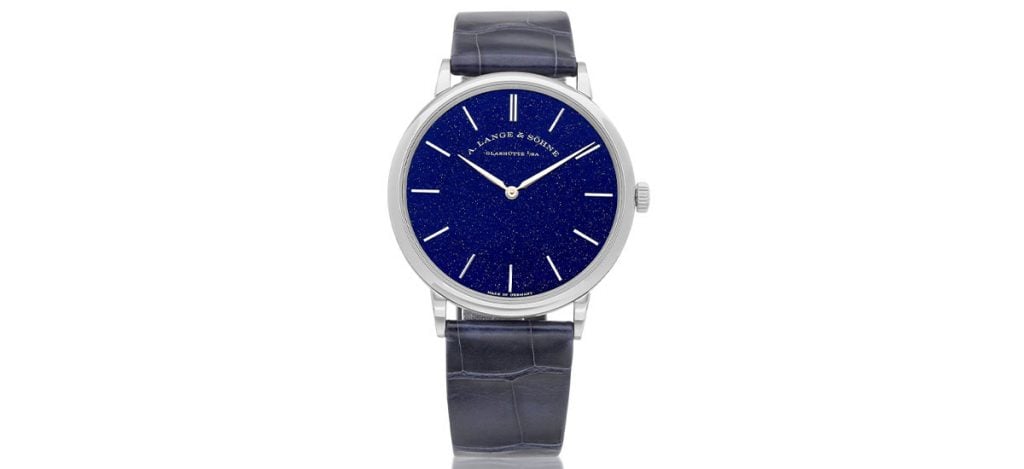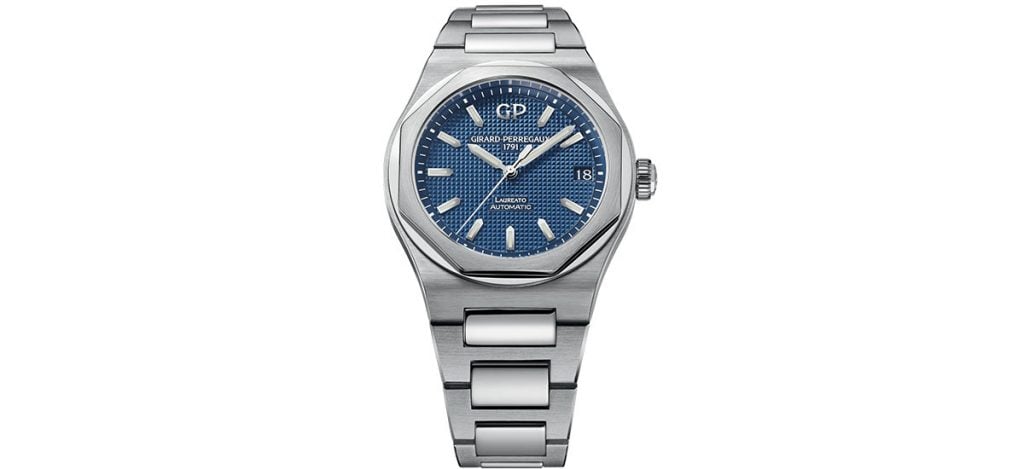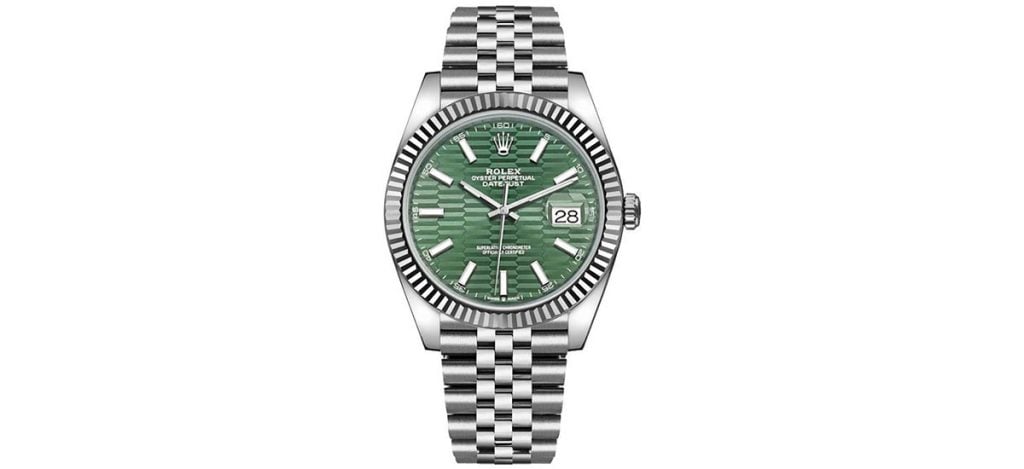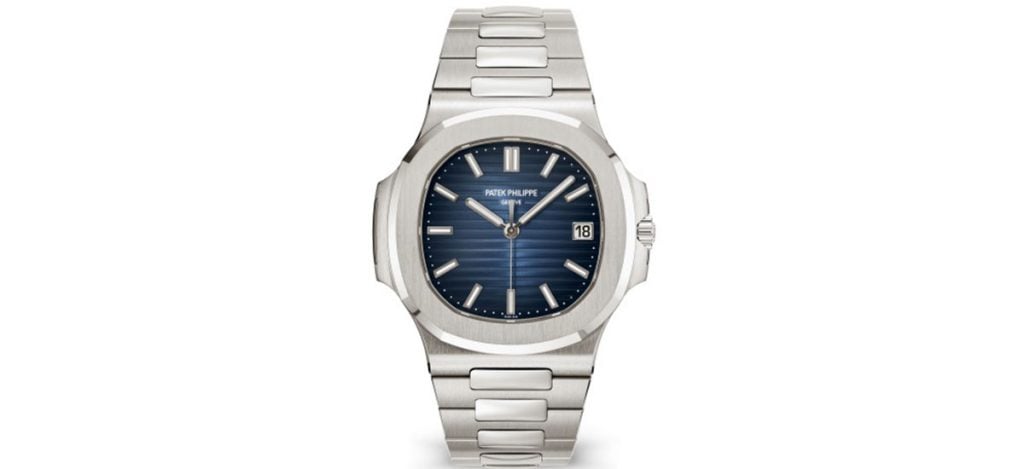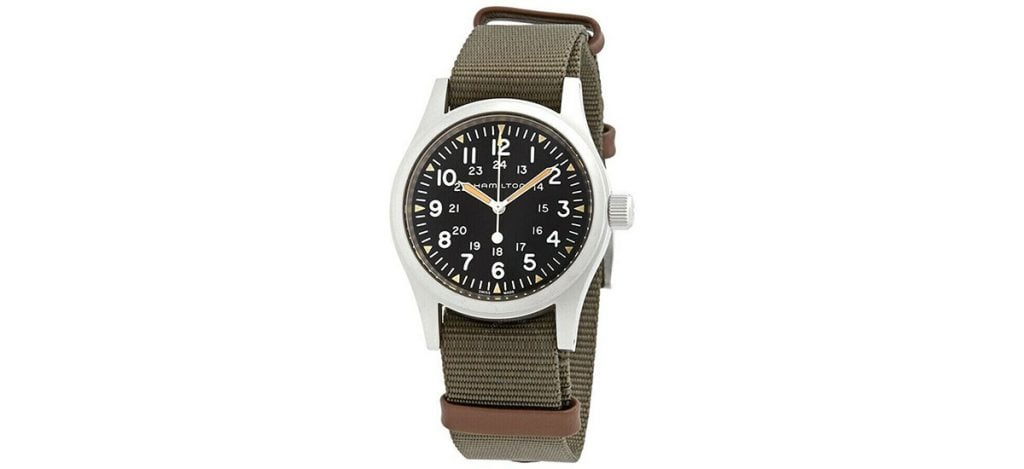
Casio, God Tier, the cheapest way to get a watch that’ll get the respect of billionaires. Seiko, value above all else, the best way to get a watch that’ll last you a lifetime without using your life savings. Pick your poison. Bit tricky, eh? Allow me to help.
About Casio Watches
Casio Computer Co., Ltd. is a Japanese company originally formed in 1946 (as Kashio Seisakujo) that began with electronics production, such as calculators. Casio was remarkably good at making calculators and is still a prevalent figure in this area – just ask your cousin making their way through college mathematics.
Their first wristwatch only saw daylight in 1974, called the CASIOTRON. However, the brand found its ‘bread and butter’ with the release of the retro-futuristic F100 – not to be confused with the very retro Ford F100. The F100 was released in 1977 and was one of the first wristwatches to be constructed (mostly) in lightweight resin.
Casio has stuck to this ‘style’ for the most part but has still taken the bold approach to making other options, some that even resemble famous Swiss offerings like the Cartier Tank. Casio has also become known for making use of quartz movements throughout all its models, and you’ll probably (never) see a mechanical Casio.
Lastly, Casio has become famous for two other things. First, for their immensely influential G-Shock range, which, as the name suggests, is a range of immensely robust and utilitarian watches that’ll withstand… Well, just about anything.
Worn by Marines and teens alike, the G-Shock transcends far more than any other watch does on the planet. Lastly, Casio has also caught fame thanks to YouTube sensation Nico Leonard, praising Casio as being ‘God Tier’, indicating that you cannot buy a better watch than a Casio.
(I bought two Casio’s because they’re exceptional value. So, that’s something to take into account).
About Seiko Watches
Seiko was founded in 1881 and soon became one of the largest Japanese horology conglomerates. Initially, the brand garnered fame for its ability to create some exceptionally high-valued divers that are a steal for the money.
What’s more, they are also known for the ‘quartz crisis’, a time in the 70s when the first quartz watches were released – by Seiko. Seiko’s ability to create exceptionally accurate timepieces at a fraction of the cost the Swiss were charging threw the entire watch market on its head!
Today, Seiko is still one of the leading brands when it comes to value for money, especially when looking at divers – that said, the Presage dress watch range is growing as we speak, and my oh my, are there a few beauties in there.
Casio vs Seiko: Which Is The Right One For You?
And now the big one! The one I’ve been dreading to answer because, well, both these brands have fan bases that are willing to throw down if you dare say something bad about either. Cautiously, let’s answer the question about which is best for you – a person with no affinity for either.
I believe there is a clear difference between the two brands that can simply be defined as what you value more. If you prefer ease of mind with a dash of value, then Casio is the best place to be. If you prefer value over ease of mind, then Seiko is your best bet – here’s why.
Brand Recognition
Let’s not beat around the bush – both of these brands are immensely popular, with several decades of history to back them up. You could wear a Casio and impress both a 7-year-old and get a nod from a millionaire as you bought something that grants exceptional ease of mind while also offering a ton of value.
Buying a Casio is like buying a Honda. For most, it looks cheap and cheerful, but only a few know that Honda has an extremely rich racing history and has made some of the most impressive sports cars in history – even Ferrari felt the heat from the original NSX.
Seiko, on the other hand, takes this and dials it up to 11. Seiko is known for creating watches that are either loved or hated by people – and the only people who hate on Seiko aren’t really good people, to be honest.
Seiko is a brand that underpromises and over-delivers, granting them brand recognition to the likes of the Swiss. Seiko also has way more influential models that have stood the test of time, and that’ll make all watch enthusiasts go, “Oh, that’s nice”!
Round one: Seiko
Model Variety
This is an area that Casio used to struggle with, seeing as their entire range was based around digital watches, but this has now changed. Whether you’re looking for a limited edition Coke G-Shock or a Tiffany-blue three-hander, Casio has a bunch of brilliant options. What’s more, they’re all relatively cost-effective as well.
Seiko would beat Casio on this one if you compare them side to side, simply because Seiko does produce more variants of their models and has done so with greater success for far longer. Their dress range also has more to offer, not to mention the diving range!
That said, I think this has to be a draw. Both of these are massive companies, and when you tally up all that either has to offer, the ranges are somewhat similar. I will mention that I do have to give a slight edge to Seiko simply because there is more. A more extensive collection list, more versions, and more movement offerings as well.
Casio seems to appeal more to the general public. There is no “Monster” in their range, but there are plenty of monstrous Seiko models. Seiko seems to appeal to the enthusiast more but still makes plenty of watches your mom will like.
For that reason, Seiko will edge out this round. You can wear ‘em while doing a real diving trip or while popping to the shops. Unless you specifically buy a G-Shock made for either, it’s going to be hard to pull that off in a Casio.
Round Two: Draw (Seiko edges it slightly)
Build Quality & Durability
This is going to be a doozy. Both of these brands are offered as cost-effective alternatives to some Swiss and German counterparts, so which edges the other when it comes to build quality? Firstly, it is clear that Casio focuses on production numbers and chases sales as best as it can.
This isn’t necessarily a bad thing; in fact, the Casio G-Shock is renowned for having some of the best quality and durability on the market! Therefore, the build quality and durability are exceptional, albeit a bit bland at times.
Everything seems mechanically made, which isn’t wrong, but the designs suffer. The durability, as a result, is almost unmatched. Compared to Seiko, who certainly has a thing for going after a new funky design. Seiko is still known for staying true to what works, as is displayed by the wide variety of exploratory and traditional divers.
This combination of trying new things and sticking to what works does sometimes mean that build quality suffers, unfortunately. Many complain that chapter markers do not match up or that bezels are not what they are supposed to be for the price.
In terms of durability, Seiko is still up there hanging with the best of ‘em. Everything taken into account, I think this round has to go to Casio. They do fewer things wrong than Seiko. Seiko has improved in recent years, however, but some of their entry-level divers still suffer from production flaws that really shouldn’t be happening.
Round Three: Casio
Movements
This is perhaps where the one brand will not only have a comfortable win but surpass the other completely. For reasons unknown, watch enthusiasts all prefer mechanical movements – either self-winding or manually-wound.
The only real argument is that this is a romantic gesture between you and your watch, a connection that surpasses the electronic world we live in. Well, Casio doesn’t have a single mechanical watch on sale anymore. It did once have them but has since switched to either quartz or solar-powered movements only.
Seiko, on the other hand, has quartz, solar-powered, self-winding, and manually wound offerings. Done. There’s no competition.
Round Four: Seiko, handsomely
Price & Availability
Firstly, on the topic of availability, these are evenly matched. You can get both of these online, in shops, and even on the second-hand market.
When it comes to price, things start to differ once again. Casio will always be slightly cheaper due to the fact that their watches are typically ‘more’ in regards to finish, movement quality, and materials used.
Seiko makes watches you could potentially use in the setting they were designed for. G-Shocks are as durable as can be, but the rest of the lineup seems more focused on aesthetics. In the end, Seiko will be more expensive, but for good reason.
Round Five: Draw, you get what you pay for
Resale Value
Let’s cut to the chase on this one. In recent years, the watch market hasn’t just boomed; it has completely exploded! Watches fetching 200% of stock price was not an uncommon sighting; that said, it probably won’t happen with a Casio. The number of Casio’s being produced is simply too high to create lust among collectors.
The same cannot be said for Seiko. Sure, they create a massive number of watches, and you’re very likely to get them all over the net, but they are a tiny bit more exclusive compared to other watches produced by Casio. They’re harder to produce, they cost more, and some of them even have a history and come with nicknames! This makes them far more likely to sell for sticker prince compared to Casio.
Round Six: Seiko
Casio vs Seiko: Top Models Comparison
Before we reach a full conclusion, it’s probably best we compare some of the most famous of best-selling models from each of these horological giants.
Casio G-Shock GA-2140RE-1A vs Seiko 5 Sports SRPD79
When you read the name G-Shock, you’re immediately taken to a tough environment filled with rugged people, hospitable factors, and just about anything else you might find in the forest. Or desert. So, finding a suitable comparison is going to be hard, but Seiko will not back down as is proposing the humble Seiko 5 Sports.
The Seiko 5 has become incredibly famous in recent years, especially with the discontinuation of the SKX007. You get various colors and even a GMT option as well. It’s not that expensive, it has a reliable movement within, and the finishing (while not perfect) is definitely suitable for a watch many consider as their first or even their beater.
G-Shock, on the other hand, is worldwide famous. Worn by some of the most popular figures in the world, including Justin Bieber, you have to pay respect where it is due. I think it’s very hard for a watch to beat the G-Shock, and very few do.
It makes zero apologies for being large, colorful, and packed with more features than you might need. It’s impossible for G-Shock to lose this battle; hell, G-Shock would win against some Swiss giants.
| Casio GA-2140RE-1A | Seiko SRPD79 | |
| Case Size | 45.4mm | 42.5mm |
| Materials | Resin | Coated Stainless Steel |
| Water Resistance | 200m | 100m |
| Movement | Quartz | 4R36 |
| Strap | Resin | Nylon |
| Additional Features | Stopwatch and Perpetual Calendar | Rotating dive bezel and day-date function |
| MSRP | $99 – $150 | $360 |
Casio AQ-230GA-9DMQ vs Seiko SUP880
Ah yes, the Casio AQ-230GA-9DMQ, reminiscent of those retro watches the brand has become extremely well known for. This particular option is finished with a gold tint and offers a unique champagne dial displaying both analog and digital time! This is rather intriguing and has only really been used by a few brands.
I actually own a cousin of this watch, and it’s exceptional for the price. Slips under every shirt I own – JLC Master Thin, who? Remember I mentioned that these brands do create some watches reminiscent of their Swiss counterparts? Well, the SUP880 is precisely that, looking eerily similar to a Cartier Tank.
What’s unique about this one is the fact that it’s a solar option, and it looks exceptional! It’s relatively inexpensive, and in my opinion, it takes the cake between these two. It just looks so much more intriguing and attractive, not trying quite as hard as the Casio. That said, the Casio is one-quarter of the price – something to consider.
| Casio AQ-230GA-9DMQ | Seiko SUP880 | |
| Case Size | 38.8mm × 29.8mm | 38.4mm x 28.6mm |
| Materials | Resin (Gold Tone) | Stainless Steel |
| Water Resistance | 30m | 30m |
| Movement | Quartz | Solar V115 |
| Strap | Resin | Stainless Steel (Gold Tone) |
| Additional Features | Dual Time | Solar Charge Function |
| MSRP | $50 | $195 |
Casio Edifice EFR-526L-7AV vs Seiko Speedtimer SSC813
The last comparison is certainly one of the specified models. The Edifice range of Casio is perhaps not the range the brand is most known for, but it remains an integral part of the brand to this day. The ref. EFR-526L-7AV is a rather handsome offering, combining sporting features in an elegant package.
A panda dial with a thin black tachymeter bezel secured with a leather strap, and you might even fool some people into thinking it’s an expensive mechanical offering – but in reality, it’s a cost-effective quartz model. The Speedtimer is a model with way more history and ‘oomph’ behind its name.
Originally released in the ’60s and recently re-released, the Speedtimer range is inspired by retro designs combined with modern mechanical prowess. Similarly to the Casio, a panda dial, but a robust case design and this time offered with a polished three-link bracelet. This is certainly more on the sportier side.
| Casio Edifice EFR-526L-7AV | Seiko Speedtimer SSC813 | |
| Case Size | 43.8mm | 39mm |
| Materials | Stainless Steel | Stainless Steel |
| Water Resistance | 100m | 100m |
| Movement | Quartz | Solar V192 |
| Strap | Leather strap | Three-link steel bracelet |
| Additional Features | Chronograph and date functions | 24-hour hand, small seconds hand |
| MSRP | $125 | $700 – $730 |
Conclusion
And the winner is… Neither. These two companies market watches and make them differently. Casio happens to make some of the most loved models on the market and rarely misses the mark. Seiko, on the other hand, experiments more but also has way more heritage to go off of and does have a cult-like following that dwarfs that of Casio.
In the end, buy what you like at a price point you can afford. One final thing to note: Seiko seems to make watches that appear mostly to enthusiasts, whereas Casio makes watches that appeal to almost anyone and everyone! So, if you want to fit in with your local enthusiast, get your hands on a Seiko SKX007…


